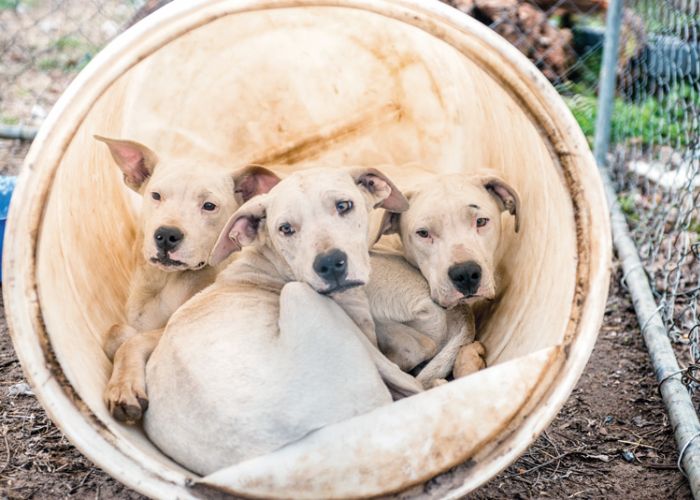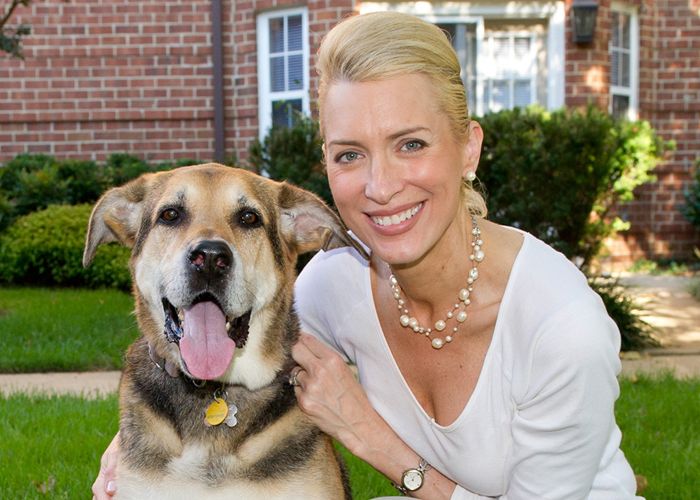Good colonies make good neighbors
With diplomacy and problem-solving skills, advocates can create a harmonious relationship between community cats and the people around them
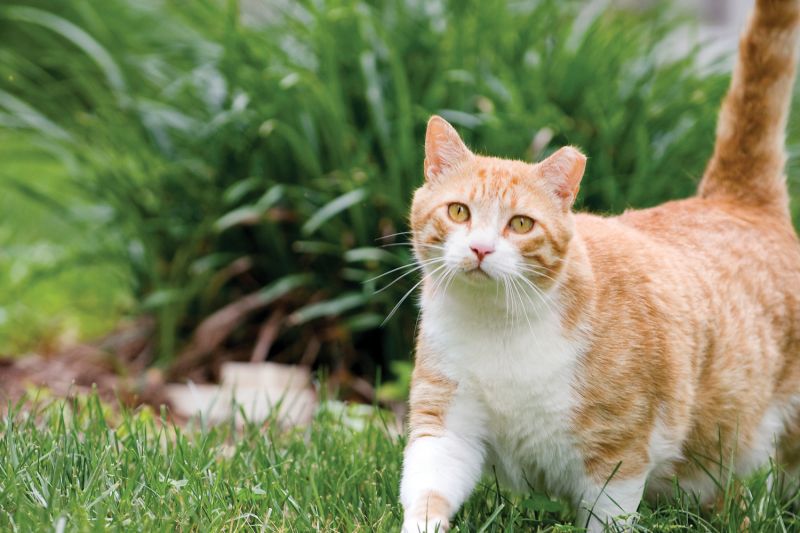
When she got the complaint that stray cats were “using the restroom” on the sidewalk in front of a church, Renee Clark was skeptical, but she drove over to study the droppings in question.
“It was pretty obvious that the poop there wasn’t cat waste; it was probably raccoon,” says Clark, an environmental biologist and feline advocate in Staunton, Va.
But while the cats weren’t to blame on the poop front, they were loitering in the church parking lot. No one was feeding them, a church official assured Clark; they’d simply appeared out of nowhere.
Clark walked around the property and found dirty paper plates and empty plastic containers that said otherwise. She talked to some church members, and the mystery unraveled: The congregation was taking leftovers from church events and tossing them out the back door to the cats, who they thought were starving.
The cats, it turned out, were from a colony on the other side of the fence separating the church from a car dealership. The owner of the dealership loved them. They were healthy, sterilized and well-fed, but not averse to extra meals.
So Clark placed a large sign on the fence, letting congregants know that the cats were being cared for and asking them not to put out food. She talked with the people who’d been tossing out the leftovers and said, “If you still want to help the cats, go around to the car dealership. You can donate some food, and they can feed them in the designated feeding station.” That was several years ago, and she’s never had another complaint.
It’s kind of a funny story, Clark admits. But like most community cat situations she deals with, the stakes were serious.
The people who’d been feeding the cats “were trying to do a kind thing,” she says, but they were putting the animals in jeopardy. A church official had asked animal control to remove them. Instead, the animal control officer enlisted the help of Cat’s Cradle, a feline rescue nonprofit in nearby Harrisonburg.
As a longtime Cat’s Cradle volunteer and board member, Clark spends much of her free time mediating the situations that can get outdoor cats in trouble. It’s a role she shares with community cat advocates around the country. Many, like Clark, got involved when they started trapping and sterilizing ferals and strays in their neighborhoods. Others began feeding cats and learned colony management best practices the hard way. Most have found that diplomacy and problem-solving skills are just as critical in their work as knowledge of cat behavior.
Whether you’re a caretaker or someone who mediates cat-related squabbles, these tips from expert troubleshooters can help you address conflicts—or avoid them in the first place.
Essential Peacekeeping Steps
Most cat-human conflicts arise when caretakers fail to recognize that community cats are oftentimes surrounded by people with a range of attitudes toward them. “They don’t live in a void,” says Susan Richmond, executive director of Neighborhood Cats in New York City. “They do live in places that impact others.”
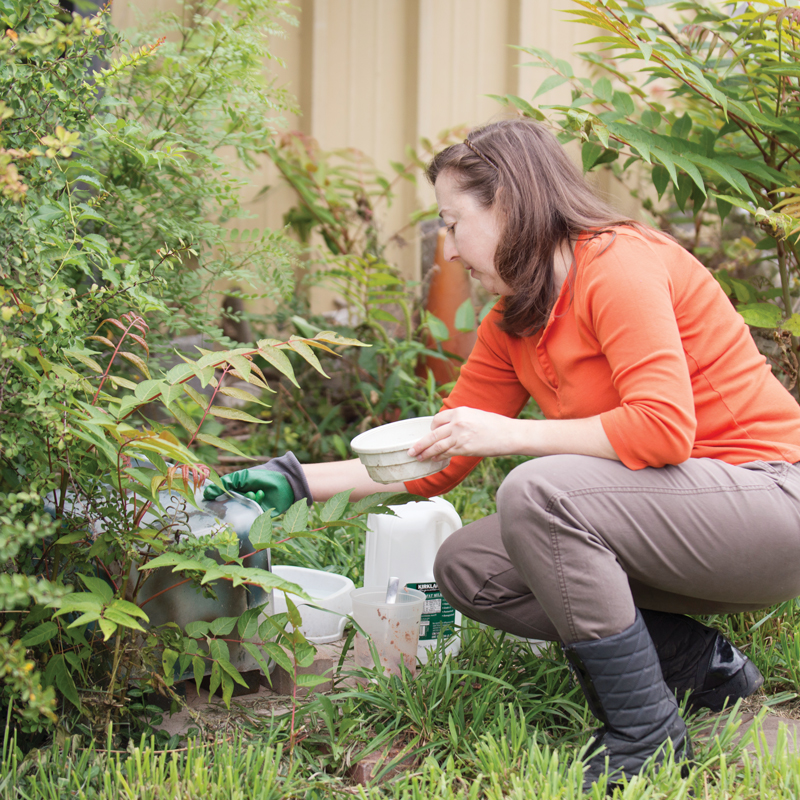
In well-managed colonies, the cats are like the perfect roommate—quiet, seldom seen and without annoying habits. The best way to get cats to achieve “perfect roomie” status is to practice trap-neuter-return (TNR).
“A lot of people with good intentions will feed, feed, feed—and they won’t go ahead and fix the cats,” says Richmond. “And nobody wants the cats to be hungry, but that’s not providing a solution.”
Unsterilized colonies present a host of animal welfare concerns—including high kitten mortality, adults injured from fighting and cats hit on the road when they roam in search of mates. People who live or work near an intact colony can become justifiably upset by the sight of suffering kittens, or frustrated by the yowling, fighting and spraying behaviors that accompany mating.
Even if a colony hasn’t generated complaints, TNR should be the top priority, says Katie Lisnik, director of cat protection and policy for The HSUS. Neighbors who are willing to tolerate six cats may not feel the same about 12, and any population increase could threaten the safety of the entire group.
Whether you’re leading the TNR effort or coaching caretakers to do the job, Lisnik emphasizes that the goal should be a 100-percent sterilization rate, and trapping should be performed quickly and aggressively.
The Better Part of Valor
It’s a core principle in community cat management: Cats who aren’t seen won’t generate complaints. Sterilization will go a long way toward making the cats more settled and less visible, but caretaker behaviors also play a big role.
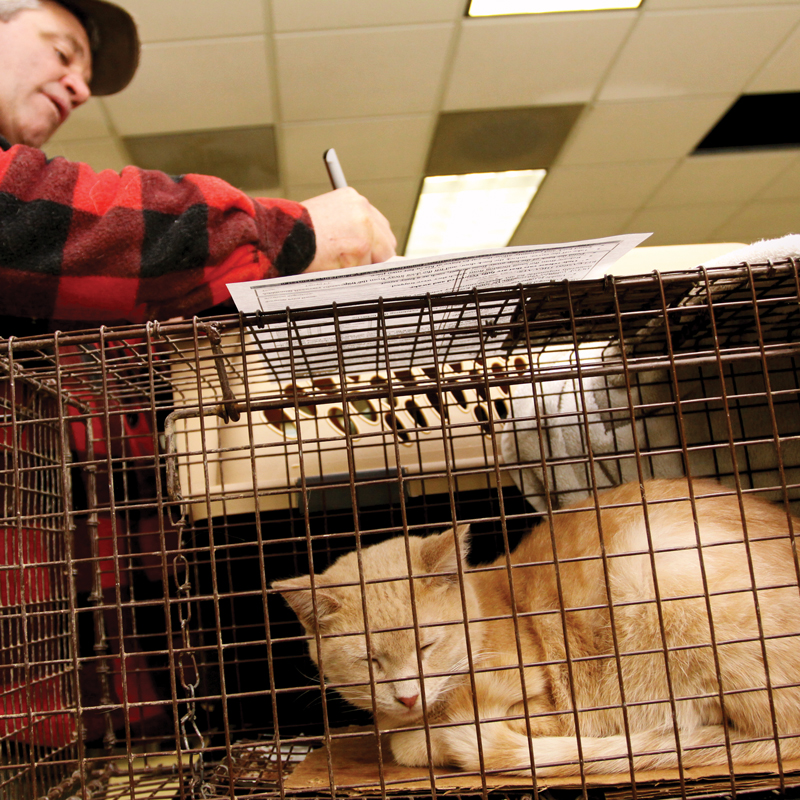
Clark has encountered caretakers whose feeding ritual involved driving to a colony site in a commercial area, dumping out a bag of kibble in the parking lot, and then heading to the next location. Business owners and customers associate the mess with the cats, she says, and the cats end up hanging out in the parking lot, where they risk being hit by cars or prompting efforts to remove them.
Instead of feeding cats anywhere and everywhere they show up, caretakers should set up a permanent feeding station in a discreet location within the cats’ territory, keeping in mind that where the cats eat and find shelter is where they’ll spend most of their time. In a commercial area, look for spots behind buildings or in nearby brush or woods. If you’re in a residential area, feed in a backyard instead of on a front porch.
Simply changing how and where the cats are fed can resolve complaints, says Clark, citing the example of a colony at an assisted living complex. Resident feeders loved the cats, but to a neighbor across the street, they were public enemy No. 1. Sterilizing the cats resolved his concerns about the noise and smell, but he also didn’t want to see them lounging in front of his house. So Clark and other Cat’s Cradle volunteers set up permanent feeding stations in the woods on the opposite side of the complex.
“As soon as you moved the feeding stations, you never saw cats out front anymore,” Clark says. “We probably moved them just 20 to 30 feet, but there wasn’t anything drawing them to that neighbor’s side anymore.”
Good housekeeping is another key factor for maintaining low-profile colony sites. “Leaving dirty dishes, empty cans, debris—it’s not only unsightly and can make it smell bad, you can attract bugs, rodents or unwanted wildlife,” says Richmond. “And the next one who could be paying attention is the local health department.”
Kayla Christiano, campaign manager for Alley Cat Allies, a national feral cat advocacy group based in Bethesda, Md., advises caretakers to feed around the same time every day, during daylight hours to avoid attracting wildlife. Feed once or twice a day, and remove any leftovers after 30 minutes to an hour. This keeps the feeding station clean, Christiano says, and allows caretakers to monitor the health of the cats and spot any newcomers who may need to be sterilized.
Any shelters should also adhere to the “discreet and tidy” rule. Some well-meaning caretakers, Clark says, set out multiple cardboard boxes, plastic storage bins and the like. These feline shantytowns draw unnecessary attention to the cats and often trigger complaints. Instead, you can build or purchase weatherproof cat shelters that won’t be an eyesore (check out the websites of The HSUS, Alley Cat Allies or Neighborhood Cats for details). Some come in untreated wood or can be painted a color that will help them blend into the surrounding landscape.
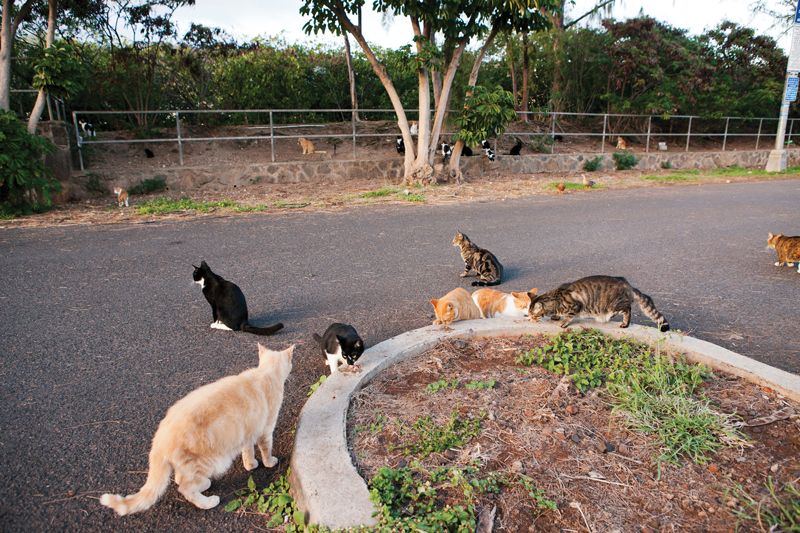
Flying Above the Radar
While the cats themselves should have a low profile, anyone caring for them or practicing TNR should be a “positive, visible presence” in the community, says Lisnik. “We’re all ambassadors for TNR. We shouldn’t be doing this secretively. We need to be open and honest with people.”
Lisnik learned this lesson more than a decade ago from Friends of Feral Felines, a TNR group in Portland, Maine. One of the organization’s projects was sterilizing community cats who lived around the docks at the city’s waterfront. “We first started going in under the radar, trying to do some TNR, and the efforts were immediately thwarted because all the fishermen loved the cats and thought we were coming in to trap and remove them or kill them,” she says. “We didn’t think anybody would care about the cats, which they very, very clearly did. Once they got over their mistrust and understood what we were doing, they fully participated, and that’s why it was a success.”
An open approach will also give you the chance to talk with people who may be hostile to the cats and to address their concerns before a full-blown conflict develops. Caretakers who acknowledge people’s concerns and engage the community make a lot more progress, says Richmond. “They’ll explain patiently how TNR can drastically reduce or completely eliminate the problems they’re having. … You can often take someone who’s really hostile and turn that around and have that person even become a supporter.”
At the same time, don’t be surprised if the people complaining about the cats don’t immediately embrace your solutions, warns Clark. “It’s almost always the same issues every time, and every time you go in, most people think that’s not going to solve it.” Be positive and understanding as you persuade them to give your fixes a chance.
Dealing With NIMBYs
Of course, even well-managed colonies can sometimes rub people the wrong way. Richmond describes a situation in which a Brooklyn resident was irate about cats coming into his yard. “He was getting quite angry about it, threatening to take the cats away,” she says.
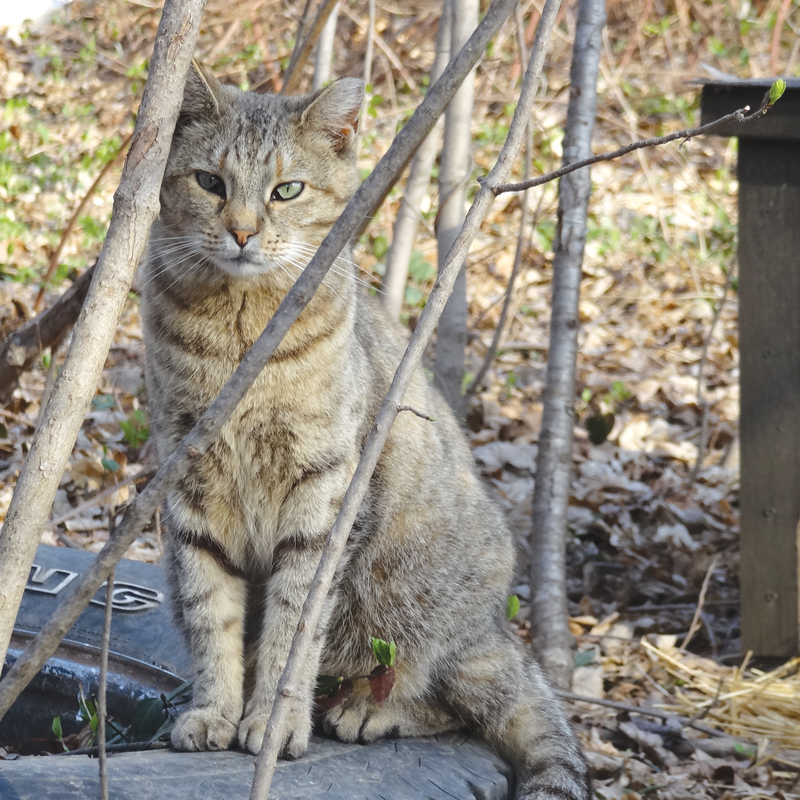
The cats came from a colony of six who were fed in a neighboring yard. They were sterilized and well cared for, and weren’t doing any damage—the man simply didn’t want them crossing his yard.
“Digging in your heels and saying, ‘Well, the cats have a right to be here, and too bad for you,’ is not a good approach,” Richmond says. “We just said, ‘We understand. This is your home. You don’t want them here. They are fed and sheltered next door, but if their presence is disturbing to you, let’s see if we can find a solution.’”
Neighborhood Cats installed two motion-activated sprinklers, and the cats quickly learned to avoid the man’s yard. “That was pretty much the end of the problem,” Richmond says. “As soon as he understood that he was being listened to and we stopped the cats from going where he didn’t want them to be, it was fine, and they’re still successfully in their colony.”
You can help prevent contentious situations by establishing lines of communication early on. There are many tried-and-true methods for deterring cats from places where they’re not welcome (see alleycat.org/deterrents), but the average person is unlikely to know about those solutions. “Even if you have a wonderful neighborhood,” says Christiano, “you can ahead of time say, ‘I’m the caregiver. If you have any issues with the cats, please come to me, because I can provide you with deterrents.’”
Think Migration, Not Relocation
In some cat-human conflicts, people often think that removing the cats is the only option. But Lisnik advises caretakers to find other solutions and to use relocation only as a last resort. “Because there are so many community cats, there simply aren’t enough other places for the cats to be relocated to,” she says. “And relocation is risky for cats.”
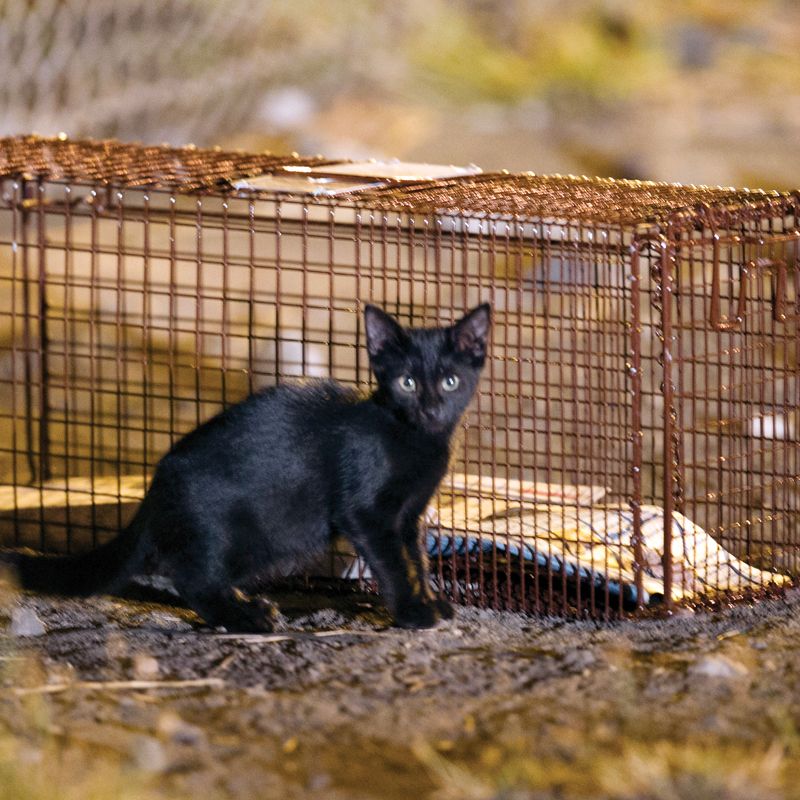
Over the past decade, Connie Markwood, a retired police officer, and Krista Rakovan, an HSUS employee, have successfully negotiated several “crisis” situations involving the colonies they feed in Montgomery County, Md. One year, they learned that the county was planning to rip up the underground piping beneath a colony’s shelters. Another year, the county was building a major road through a patch of woods where a different colony lived. On two occasions, a property where the cats were previously welcome was sold to someone who wanted the animals removed.
By negotiating with property owners and the owners of nearby lands, the two women have managed to keep the cats in their familiar territories. Sometimes, they only had to move the shelters and feeding stations about 50 feet to an adjacent property, says Markwood. They clicker trained the cats at meal times, and then used the sound of the clicker to lead them to the new spot.
When you approach a property owner, you want to be friendly, informed and accommodating. “Send your most personable, most likable person,” says Rakovan. By explaining that the cats are attached to their territory; that they are sterilized, vaccinated and cared for; that their population is decreasing; and that they have nowhere else to go, you may persuade a property owner to let them be or to give you more time to migrate them to another part of their territory.
Achieving Good, Not Perfection
Over the past two decades, as TNR has become increasingly popular, the collective wisdom on how to best care for community cats has also grown. With YouTube videos, webinars and comprehensive guides on trapping and colony management, it’s now easy to be informed on community cat caretaking, says Lisnik.
At the same time, she cautions people not to let the perfect be the enemy of the good. Helping community cats doesn’t have to be a full-time job, she says. If you come across cats who are healthy and in good body condition, chances are they already have food sources. Your role could simply be providing the labor, funds or know-how to get them trapped and sterilized, or coaching their feeders on smart caretaking practices.
“Even if you’re not able to provide that ‘perfect’ colony home,” Lisnik says, “you’re still doing really, really good by providing that TNR.”


